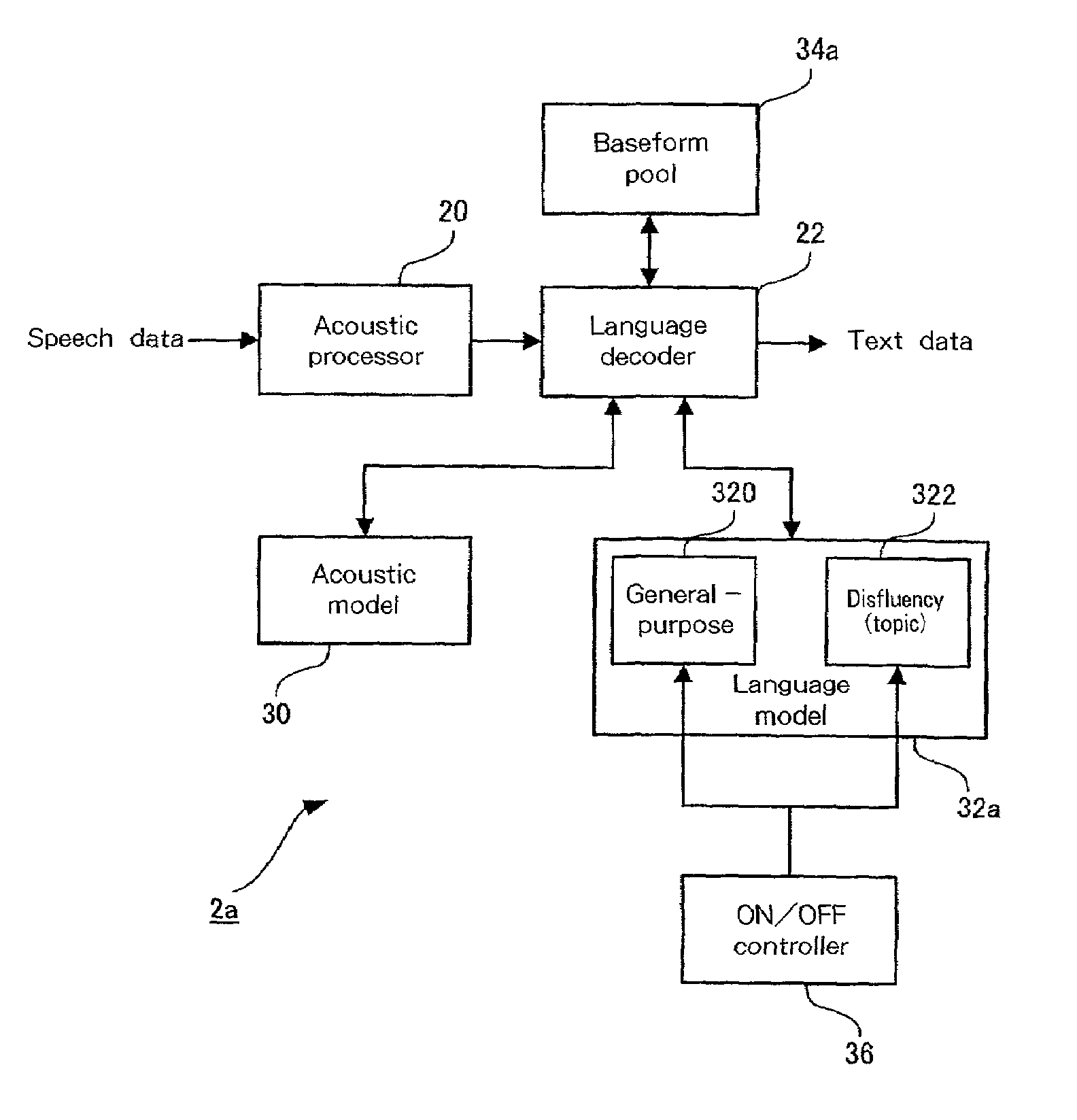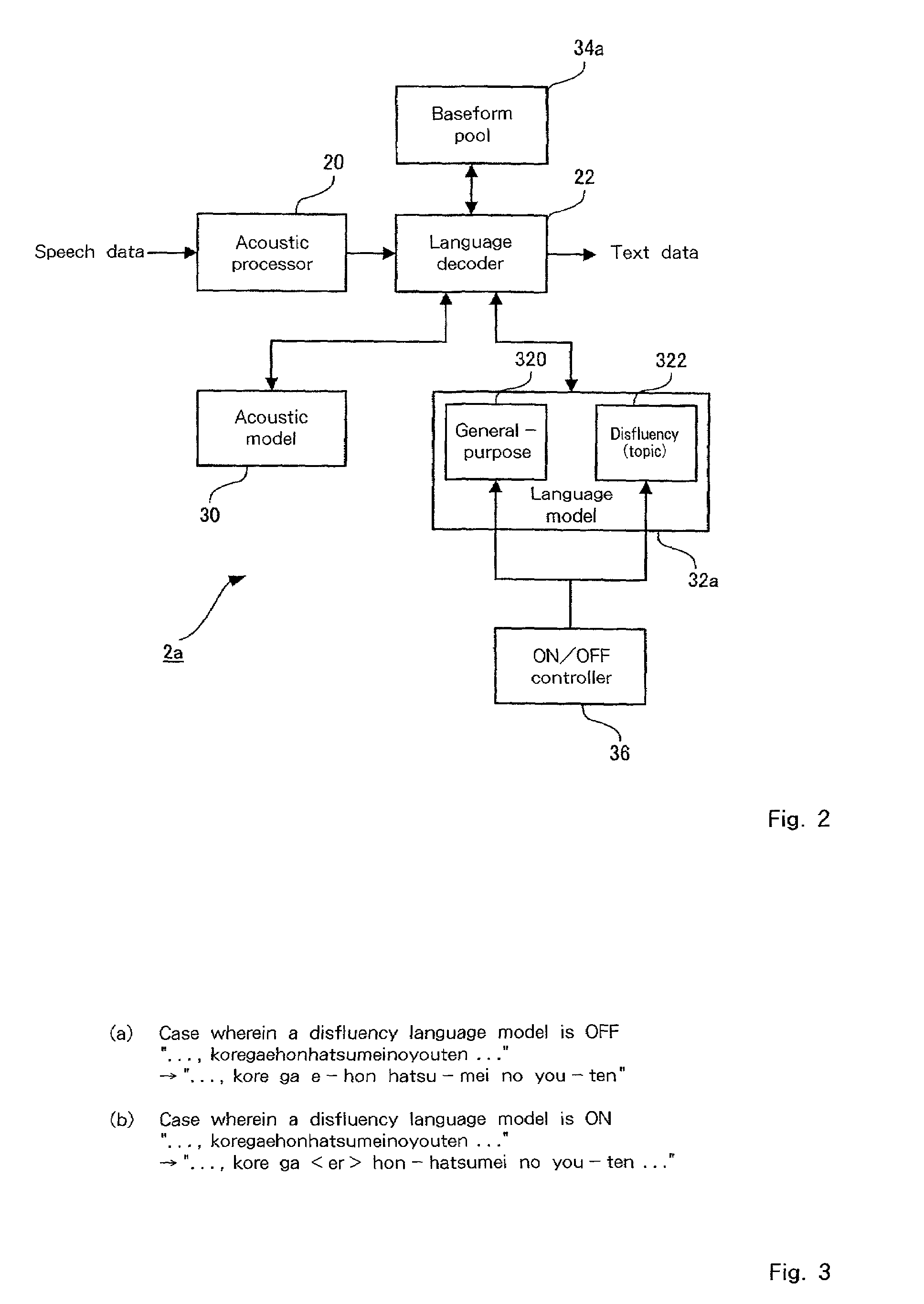Speech recognition apparatus and method utilizing a language model prepared for expressions unique to spontaneous speech
a speech recognition and expression technology, applied in the field of natural speech recognition, can solve the problems of difficult to avoid a phenomenon, difficult to use an average model for the prediction of disfluencies, etc., and achieve the effect of facilitating the automatic removal of disfluencies
- Summary
- Abstract
- Description
- Claims
- Application Information
AI Technical Summary
Benefits of technology
Problems solved by technology
Method used
Image
Examples
first embodiment
[0045]The preferred embodiments of the present invention will now be described while referring to the accompanying drawings. FIG. 1 is a diagram showing the configuration of a speech recognition apparatus 1 according to a As shown in FIG. 1, the speech recognition apparatus 1 can include a CPU 10, which further can include a micro processor, memory and peripheral circuits; an input device 12, including a mouse, a keyboard and a speech input device 120, such as a microphone; a display device 14, such as a CRT display; and a storage device 16, such as an HDD (Hard Disk Drive), a DVD (Digital Versatile Disc) device, or a CD (Compact Disk) device.
[0046]The speech recognition apparatus 1 employs a hardware configuration wherein the speech input device 120 is added to a common computer, and executes a recorded speech recognition program 2a that is supplied on a storage medium 18, such as a DVD, a CD-ROM or a CD-R. That is, the speech recognition apparatus 1 recognizes speech (speech data...
second embodiment
[0066]In addition, since the ON / OFF control does not require that the program be reset, the user can easily control the ON / OFF state of the automatic disfluency deletion function by selecting the disfluency language model 322 for this operation. Furthermore, the disfluency language model 322 also can be used with a topic that is especially prepared for another field, such as “computer”, “soccer” or “baseball”. For example, a topic for inserting marks, such as punctuation, also can be provided. An explanation will now be given, as a second embodiment, of an example wherein both the topic for disfluency deletion and the topic for punctuation insertion are provided.
[0067]Since the basic configuration of a speech recognition apparatus according to a second embodiment is the same as that of the speech recognition apparatus 1 for the first embodiment, no explanation for it will be given. FIG. 7 is a diagram showing the arrangement of a speech recognition program 2b according to the second...
PUM
 Login to View More
Login to View More Abstract
Description
Claims
Application Information
 Login to View More
Login to View More - R&D
- Intellectual Property
- Life Sciences
- Materials
- Tech Scout
- Unparalleled Data Quality
- Higher Quality Content
- 60% Fewer Hallucinations
Browse by: Latest US Patents, China's latest patents, Technical Efficacy Thesaurus, Application Domain, Technology Topic, Popular Technical Reports.
© 2025 PatSnap. All rights reserved.Legal|Privacy policy|Modern Slavery Act Transparency Statement|Sitemap|About US| Contact US: help@patsnap.com



